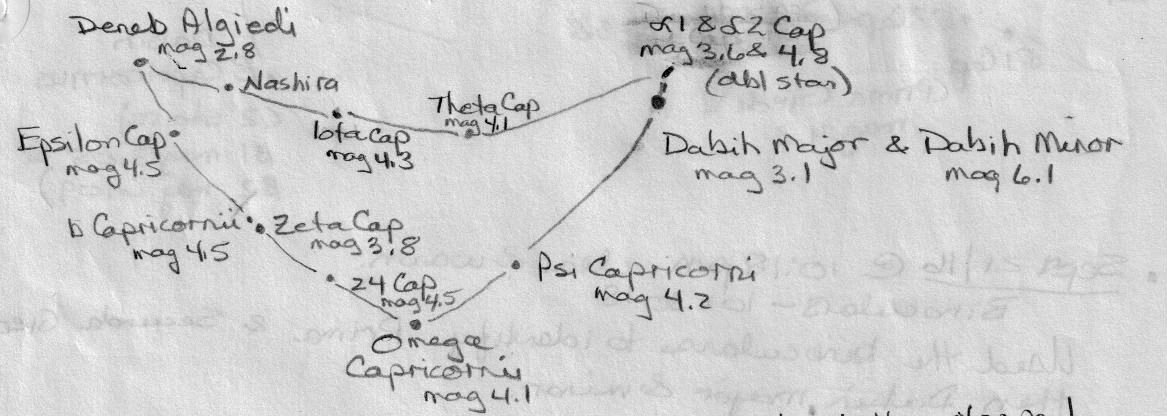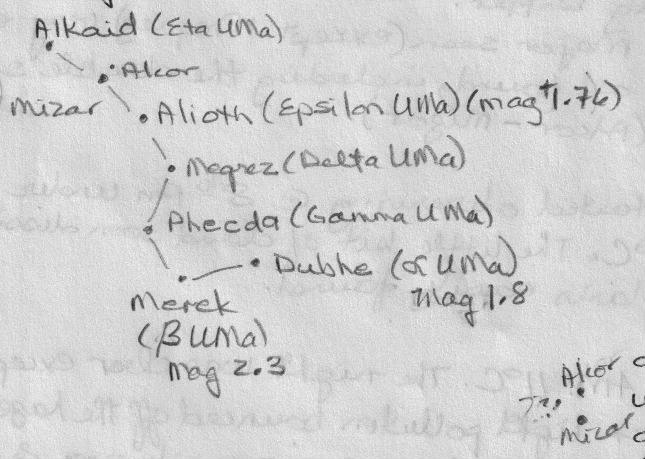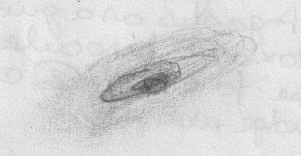Constellations: Capricornus, Cassiopeia, Corona Borealis, Cygnus, Hercules, Pegasus, Scorpius, Triangulum, Ursa Major, Ursa Minor
Asterisms: Coathanger/ Collander 399, Keystone of Hercules, Square of Pegasus, Teapot
Stars: Albireo, Alcor, Deneb, Mizar
Messier Objects: M13 (Hercules Cluster), M31 (Andromeda), M45 (Pleaides)
NGC: NGC 869 / NGC 884
Location: St. Croix Observatory (SCO)
With Others: Jerry Black, Blair MacDonald, Dave Chapman, Peter Hurley, Art Cole
Date: 2016-09-02
Time: 8:30 PM - 12:30 AM ADT
Transparency: good
Seeing: good
Fog/Clouds on the low horizon initially but they disappeared by 10 PM. 12° C - 16° C. Lights from Halifax/Bedford restricted viewing until objects were higher in the sky. Only made reference to M7 in my notes as a large open cluster framed by several bright stars with numerous less bright/smaller stars within.
|
|
Ursa Major Only stars of the handle were visible at 8:30 PM. By 8:45 PM the bowl was visible as was Polaris in Ursa Minor. The double stars of Mizar and Alcor were easily seen naked eye and with my binoculars. |
|
Coathanger / Collander 399 / Brocchi's Cluster Started at Albireo at the top of my FOV then moved another .5-1 FOV and there it was! Could easily put my binoculars up there afterwards and land on or near it. Can also be found 1/3 of the way between Altair & Vega. NOTE: NASA refers to this as an asterism. |
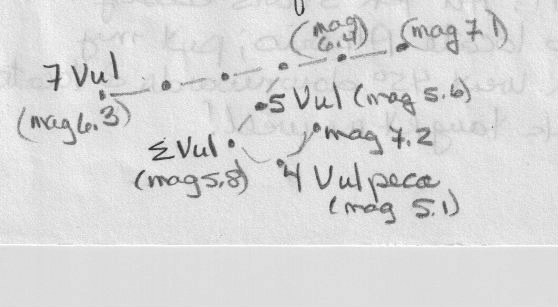 |
|
|
M31 (Andromeda Galaxy) Found it using the square of Pegasus and its "Andromeda legs". Confirmed faint fuzzy as M31 using my binoculars. An elliptical shape with a bright core and less bright star field around the core. |
|
M45 / Pleaides / Melotte 22 / "7 Sisters" This wasn't the first time I found the Pleaides, but this was the first time it was so visible and therefore easily seen naked eye. I am always impressed with this open cluster and its beauty. The 7sisters and their parent were very bright with numerous stars surrounding them. It always reminds me of a distorted, shrunken Big Dipper - shorter handle (1 main star) and a smaller squashed bucket. |
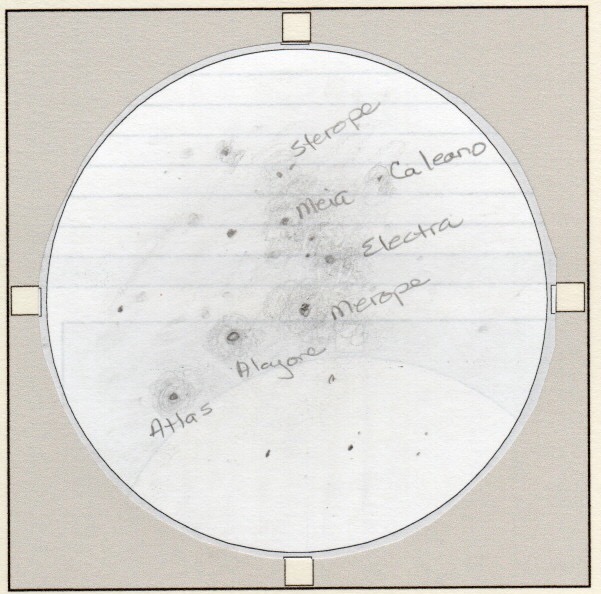 |
| Triangulum Time: 11:40 PM ADT Equipment: Visual S&T Chart Ref: 2, 4 Look for Andromeda (M31), then find the constellation below Mirach and Almach. Thanks again to Dave Chapman! With naked eye, the 3 brightest stars were very visible and stood out in the dark sky. Delta Triangulum and 7 Triangulum were not seen visually; hope to find them another night. |
 |
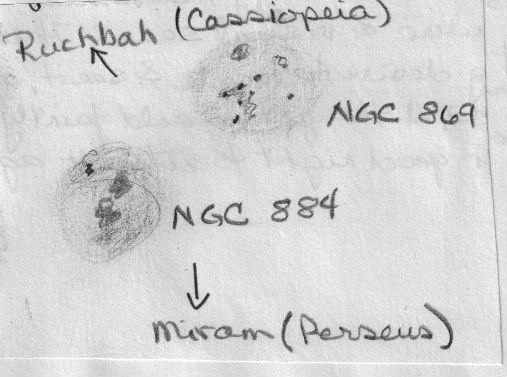 |
NGC 869 / NGC 884 Thanks to Art Cole for instructions on where to find the double cluster. Both clusters are easily discernible within the same FOV, one just above and to the right of the other. Diffuse field around a bright centre for both NGCs. Found them between Ruchbah of Cassiopeia and Miram of Perseus. I was impressed - very cool! |
Capricornus
Time: 12:30 AM ADT
Equipment: Visual
S&T Chart Ref: 66, 68, 77
Capricornus is located beside Sagittarius outside the Milky Way midway to the Square of Pegasus. Looked like a double "V" - both very broad at the opening with the lower one being much deeper than the upper. Reminded me of a painted clown smile. The constellation also had many stars inside of it. Will have to take a closer look through binoculars.
Thanks to Dave Chapman! He jokingly referred to this constellation as "Orion's underpants." (NOTE: Zits cartoon in 2018 referred to it as "Orion's fanny pack.")